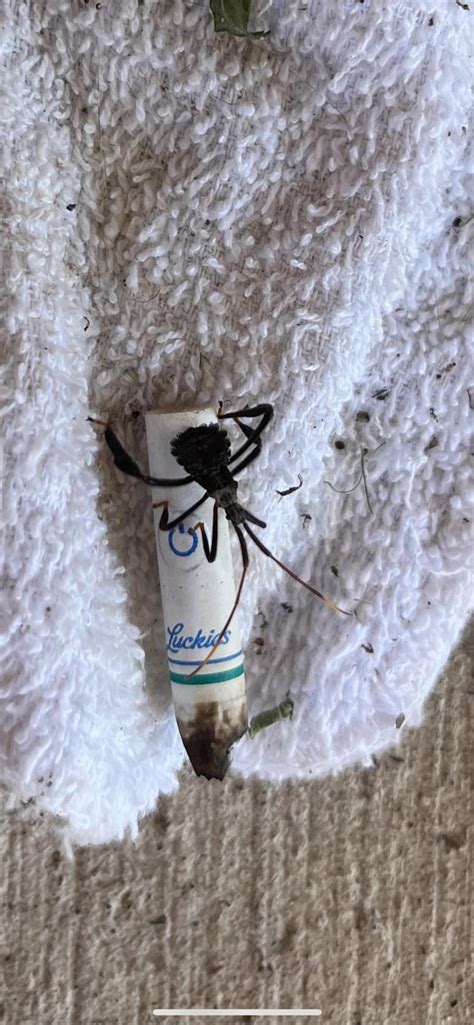
A bizarre-looking animal, suspected to be a bear with mange, has sparked concern in a residential area of Parsippany, New Jersey, prompting police to warn residents to keep their distance. The Parsippany Police Department issued an advisory after the creature was spotted wandering through yards, exhibiting a sickly appearance.
Residents of Parsippany, New Jersey, were taken by surprise when an unusual animal was seen meandering through their neighborhood, leading local authorities to issue a warning urging people to avoid contact. The Parsippany Police Department reported multiple sightings of the animal, suspected to be a bear suffering from a severe case of mange, a skin disease caused by parasitic mites. The animal’s distressed condition and unusual appearance have raised concerns among residents, prompting the police to take precautionary measures to ensure public safety.
“Please do not approach this animal,” the Parsippany Police Department stated in their advisory, emphasizing the importance of maintaining a safe distance. The police also advised residents to secure their garbage cans and remove any potential food sources that might attract the animal. The New Jersey Department of Environmental Protection (NJDEP) has been notified and is working with local authorities to assess the situation and determine the best course of action.
The appearance of this animal has generated a mix of concern and curiosity among residents. Mange can cause significant hair loss, skin lesions, and overall debilitation in animals, leading to a weakened state and altered behavior. While bears are not uncommon in New Jersey, an animal in such visible distress is unusual and raises questions about the health of the local wildlife population.
The incident highlights the increasing interactions between humans and wildlife as suburban areas expand into natural habitats. These encounters often pose challenges for both residents and animals, requiring careful management and proactive measures to minimize conflicts and ensure the well-being of both. Local authorities are urging residents to remain vigilant and report any further sightings of the animal to the police department, stressing the importance of community cooperation in addressing this situation.
Background on Mange in Bears
Mange is a highly contagious skin disease caused by various species of mites. In bears, it is most commonly caused by the mite Sarcoptes scabiei, which burrows into the skin, causing intense itching, inflammation, and hair loss. As the infestation progresses, the skin can become thickened and crusty, leading to secondary bacterial infections. Severely affected animals can suffer from malnutrition, dehydration, and hypothermia due to their inability to regulate their body temperature effectively.
Mange can spread rapidly among wildlife populations, particularly in areas where animals are concentrated or where there is limited genetic diversity. Factors such as poor nutrition, stress, and underlying health conditions can increase an animal’s susceptibility to the disease. In bear populations, mange outbreaks can have significant impacts on individual health and overall population dynamics.
The treatment of mange in wild animals is challenging, particularly in free-ranging populations. Options include trapping and treating individual animals with antiparasitic drugs, administering medication through bait, and implementing habitat management strategies to reduce mite populations. However, these approaches can be costly, time-consuming, and logistically complex. Prevention is key, and efforts to maintain healthy wildlife populations through habitat conservation, responsible waste management, and public education are crucial in minimizing the risk of mange outbreaks.
Expert Opinions and Wildlife Management
Wildlife experts emphasize the importance of understanding the factors that contribute to the spread of mange in bear populations. According to Dr. Emily Womble, a wildlife veterinarian with the New Jersey Division of Fish and Wildlife, “Mange outbreaks are often indicative of underlying ecological stressors, such as habitat loss, food scarcity, and increased human-wildlife interactions. Addressing these issues is essential for mitigating the risk of future outbreaks and promoting the long-term health of bear populations.”
Dr. Womble also stresses the importance of public cooperation in managing mange outbreaks. “Residents can play a critical role in preventing the spread of mange by avoiding feeding wildlife, securing garbage cans, and reporting any sightings of sick or distressed animals to the authorities. By working together, we can help protect our wildlife and ensure the safety of our communities.”
The NJDEP has implemented several programs to monitor and manage bear populations in New Jersey, including conducting population surveys, tracking bear movements, and providing technical assistance to local communities. These efforts are aimed at promoting coexistence between humans and bears and minimizing the potential for conflicts.
Community Reactions and Concerns
The appearance of the mangy bear in Parsippany has elicited a range of reactions from local residents. While some express concern for the animal’s well-being, others are worried about the potential risks to public safety. Many residents have taken to social media to share photos and videos of the animal, sparking discussions about the appropriate response.
“I was shocked when I saw the bear in my backyard,” said Maria Rodriguez, a resident of Parsippany. “It looked so sick and weak. I felt bad for it, but I was also worried about my children and pets.”
Another resident, John Smith, expressed concern about the potential for the bear to become aggressive. “I’m worried that if the bear is desperate for food, it might become more likely to approach people or try to get into our homes. We need to make sure that our community is safe.”
Local officials have acknowledged the concerns of residents and are working to provide accurate information and guidance. “We understand that residents are concerned about the appearance of this animal,” said Mayor James Barberio of Parsippany. “We want to assure everyone that we are taking this situation seriously and working closely with the NJDEP to determine the best course of action. Our top priority is the safety and well-being of our residents.”
The Role of Human-Wildlife Interactions
The incident in Parsippany underscores the growing challenges of managing human-wildlife interactions in suburban areas. As human populations expand and encroach upon natural habitats, encounters with wildlife become more frequent, increasing the potential for conflicts and the spread of diseases.
According to Dr. Kenneth Miller, a wildlife ecologist at Rutgers University, “Human-wildlife interactions are becoming increasingly common in New Jersey and other states. As we continue to develop and fragment natural habitats, wildlife are forced to adapt to living in close proximity to humans. This can lead to a variety of problems, including increased vehicle collisions, property damage, and the spread of diseases.”
Dr. Miller emphasizes the importance of implementing proactive measures to minimize human-wildlife conflicts. “We need to focus on habitat conservation, responsible waste management, and public education to reduce the potential for negative interactions between humans and wildlife. By creating a more sustainable environment, we can help ensure the long-term health and well-being of both our communities and our wildlife populations.”
Preventative Measures and Community Involvement
Preventing the spread of mange and other wildlife diseases requires a multi-faceted approach that involves both individual actions and community-wide efforts. Residents can take several steps to reduce the risk of attracting wildlife to their properties, including securing garbage cans, removing pet food and bird feeders, and trimming vegetation around their homes.
Community-wide efforts include implementing responsible waste management programs, promoting habitat conservation, and providing public education about wildlife safety. Local governments can also work with wildlife agencies to develop and implement management plans that address specific challenges related to human-wildlife interactions.
“Community involvement is essential for effective wildlife management,” said Maria Rodriguez, a local environmental advocate. “We need to work together to create a community that is both safe for people and supportive of wildlife. By educating ourselves about wildlife behavior, taking proactive measures to minimize conflicts, and reporting any concerns to the authorities, we can help ensure that our community remains a healthy and vibrant place for both humans and animals.”
The Broader Ecological Context
The case of the mangy bear in Parsippany also raises broader questions about the health and resilience of local ecosystems. Mange outbreaks can be indicative of underlying ecological stressors, such as habitat loss, pollution, and climate change, which can weaken animal populations and make them more susceptible to disease.
According to Dr. David Robinson, an environmental scientist with the New Jersey Conservation Foundation, “The health of our wildlife populations is directly linked to the health of our ecosystems. When we degrade or destroy natural habitats, we disrupt the delicate balance of nature and create conditions that are conducive to the spread of diseases. We need to prioritize conservation and restoration efforts to protect our ecosystems and ensure the long-term health of our wildlife.”
Dr. Robinson also emphasizes the importance of addressing the root causes of ecological degradation. “We need to reduce our carbon footprint, protect our water resources, and promote sustainable land use practices to create a more resilient environment. By taking these steps, we can help protect our wildlife from the threats of disease, habitat loss, and climate change.”
The Importance of Public Education and Awareness
Public education and awareness are critical for promoting responsible human-wildlife interactions and preventing the spread of diseases. By educating residents about wildlife behavior, safety precautions, and the importance of conservation, we can help foster a greater appreciation for nature and encourage more sustainable practices.
Local organizations, schools, and government agencies can play a key role in providing public education. Workshops, seminars, and online resources can be used to inform residents about a variety of topics, including wildlife identification, safe feeding practices, and the importance of reporting sick or injured animals.
“Education is the key to creating a more sustainable future for both humans and wildlife,” said Sarah Johnson, a local educator. “By teaching our children about the importance of conservation and responsible stewardship, we can empower them to become lifelong advocates for nature. We need to create a culture of respect and appreciation for the natural world, so that future generations will continue to protect and cherish our wildlife.”
The Role of Technology in Wildlife Management
Technology is playing an increasingly important role in wildlife management, providing valuable tools for monitoring animal populations, tracking their movements, and assessing their health. GPS collars, camera traps, and remote sensing technologies are being used to gather data on wildlife behavior and distribution, providing insights that can inform management decisions.
In the case of the mangy bear in Parsippany, technology could be used to track the animal’s movements and assess the effectiveness of treatment efforts. Drones could be used to monitor the bear’s condition from a safe distance, providing valuable information about its health and behavior.
“Technology is revolutionizing the field of wildlife management,” said Dr. Michael Brown, a wildlife biologist with the U.S. Fish and Wildlife Service. “By using advanced technologies, we can gather more data, make more informed decisions, and implement more effective management strategies. Technology is helping us to better understand our wildlife populations and protect them from the threats of disease, habitat loss, and climate change.”
Ethical Considerations in Wildlife Management
Wildlife management decisions often involve complex ethical considerations, particularly when dealing with sick or injured animals. The question of whether to intervene and provide medical treatment or to allow nature to take its course can be a difficult one, with no easy answers.
In the case of the mangy bear in Parsippany, there are several ethical considerations to weigh. On one hand, there is a moral obligation to alleviate the suffering of the animal and provide it with medical care. On the other hand, intervening in the natural world can have unintended consequences, potentially disrupting ecological processes and affecting the health of other wildlife populations.
“Wildlife management decisions should be guided by ethical principles that prioritize the well-being of both individual animals and the overall ecosystem,” said Dr. Elizabeth Green, an ethicist with the Wildlife Society. “We need to carefully consider the potential impacts of our actions and make decisions that are consistent with our values and beliefs. We should strive to minimize harm, promote conservation, and respect the integrity of the natural world.”
Long-Term Implications and Future Outlook
The appearance of the mangy bear in Parsippany serves as a reminder of the ongoing challenges of managing human-wildlife interactions and protecting our natural resources. As human populations continue to grow and expand, the potential for conflicts between humans and wildlife will only increase.
To ensure a sustainable future for both humans and wildlife, we need to embrace a holistic approach to conservation that addresses the root causes of ecological degradation and promotes responsible stewardship of our natural resources. This includes protecting and restoring natural habitats, reducing our carbon footprint, promoting sustainable land use practices, and educating the public about the importance of conservation.
“The future of our wildlife populations depends on our ability to work together to create a more sustainable world,” said Dr. Robert Wilson, a conservation biologist with the World Wildlife Fund. “We need to recognize that humans and wildlife are interconnected and that the health of our planet depends on our ability to live in harmony with nature. By embracing a conservation ethic, we can help ensure that future generations will have the opportunity to enjoy the beauty and wonder of the natural world.”
Conclusion
The unusual appearance of a suspected mangy bear in Parsippany, New Jersey, has sparked a wave of concern and curiosity among residents. The Parsippany Police Department’s warning to avoid the animal underscores the potential risks associated with human-wildlife interactions, particularly when the animal is distressed or diseased. The incident highlights the broader challenges of managing wildlife in suburban areas, where habitat loss, food scarcity, and increased human activity can contribute to the spread of diseases like mange.
Effective wildlife management requires a multi-faceted approach, including preventative measures such as securing garbage cans and removing food sources, community involvement through reporting sightings and supporting conservation efforts, and collaboration between local authorities, wildlife agencies, and residents. Public education and awareness are crucial for promoting responsible human-wildlife interactions and fostering a greater appreciation for the natural world.
By addressing the underlying ecological stressors, such as habitat degradation and climate change, and by implementing sustainable land use practices, we can help create a healthier and more resilient environment for both humans and wildlife. The incident in Parsippany serves as a reminder of the importance of proactive conservation efforts and the need for a community-wide commitment to protecting our natural resources.
Frequently Asked Questions (FAQ)
1. What is mange, and how does it affect bears?
Mange is a contagious skin disease caused by mites that burrow into the skin, leading to intense itching, hair loss, inflammation, and thickened, crusty skin. In bears, it can cause significant discomfort, malnutrition, dehydration, hypothermia, and secondary bacterial infections, weakening the animal and altering its behavior.
2. What should I do if I see a bear with mange in my neighborhood?
The most important thing is to keep your distance. Do not approach the animal, and ensure that children and pets are kept away. Report the sighting to the Parsippany Police Department or the New Jersey Department of Environmental Protection (NJDEP) immediately, providing as much detail as possible about the location and condition of the animal.
3. How can I prevent attracting bears to my property?
Secure your garbage cans with tight-fitting lids, store pet food indoors, remove bird feeders (especially during warmer months), clean up any spilled food or crumbs around your property, and trim vegetation to reduce potential hiding places for bears. Consider installing motion-activated lights or fences to deter bears from entering your yard.
4. Is mange transmissible to humans or pets?
Yes, the type of mange typically found in bears (sarcoptic mange) can be transmitted to humans and pets, although it is less common. It can cause intense itching and skin irritation. If you suspect that you or your pet has been exposed to mange, consult a doctor or veterinarian for treatment.
5. What is the NJDEP doing to address the issue of mange in bears?
The NJDEP monitors bear populations and investigates reports of mange. They may trap and treat individual animals with antiparasitic drugs or administer medication through bait. They also work with local communities to educate residents about preventing human-wildlife conflicts and managing waste responsibly. They may also implement habitat management strategies to reduce mite populations. The NJDEP also provides technical assistance to local communities on managing bear populations.









